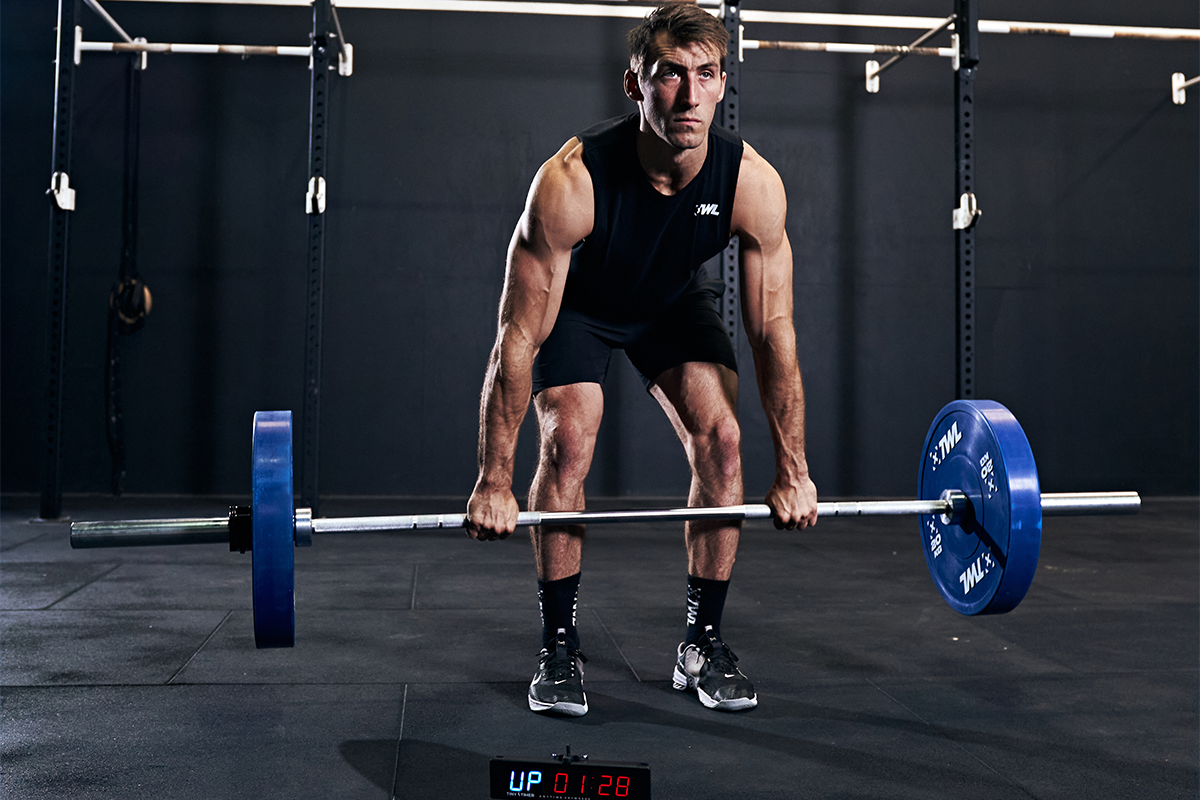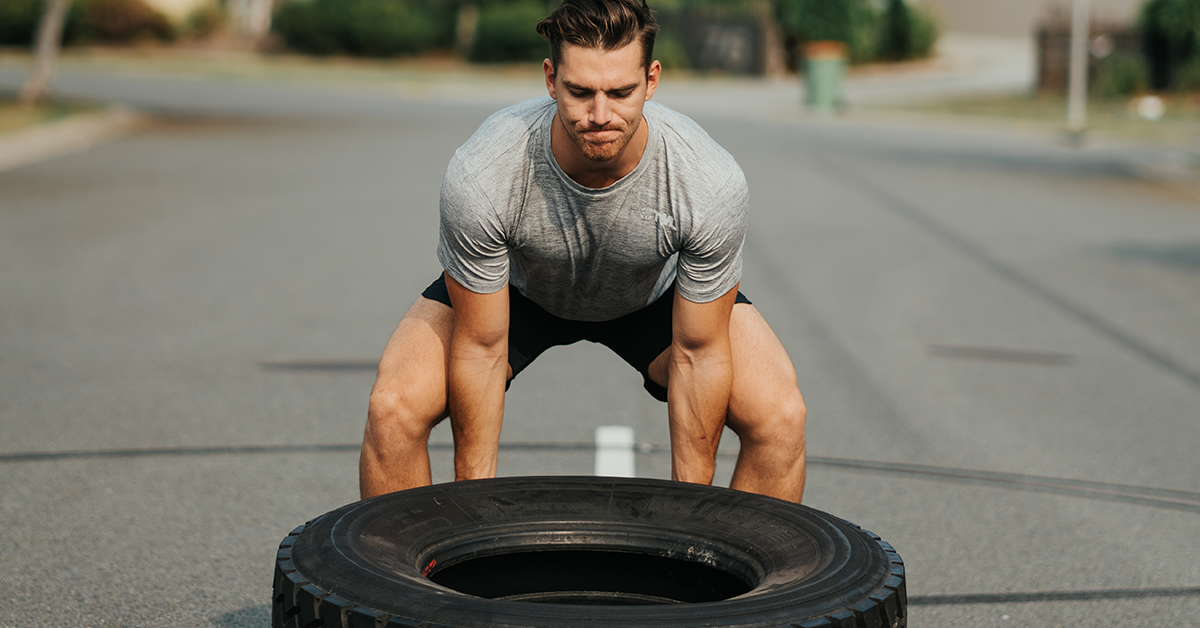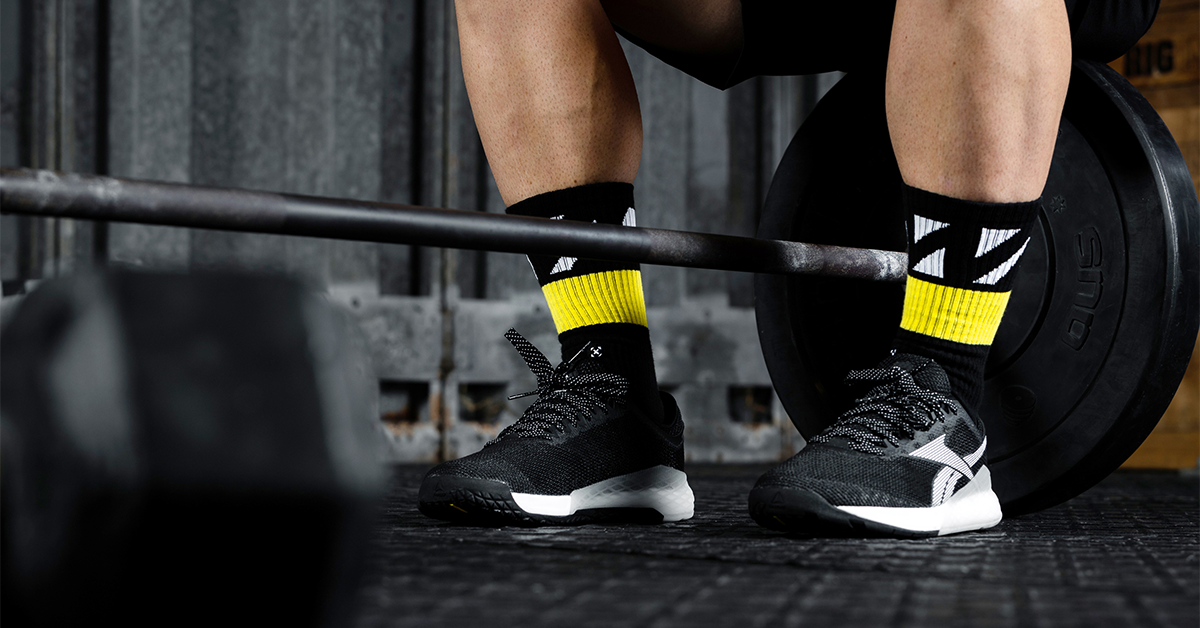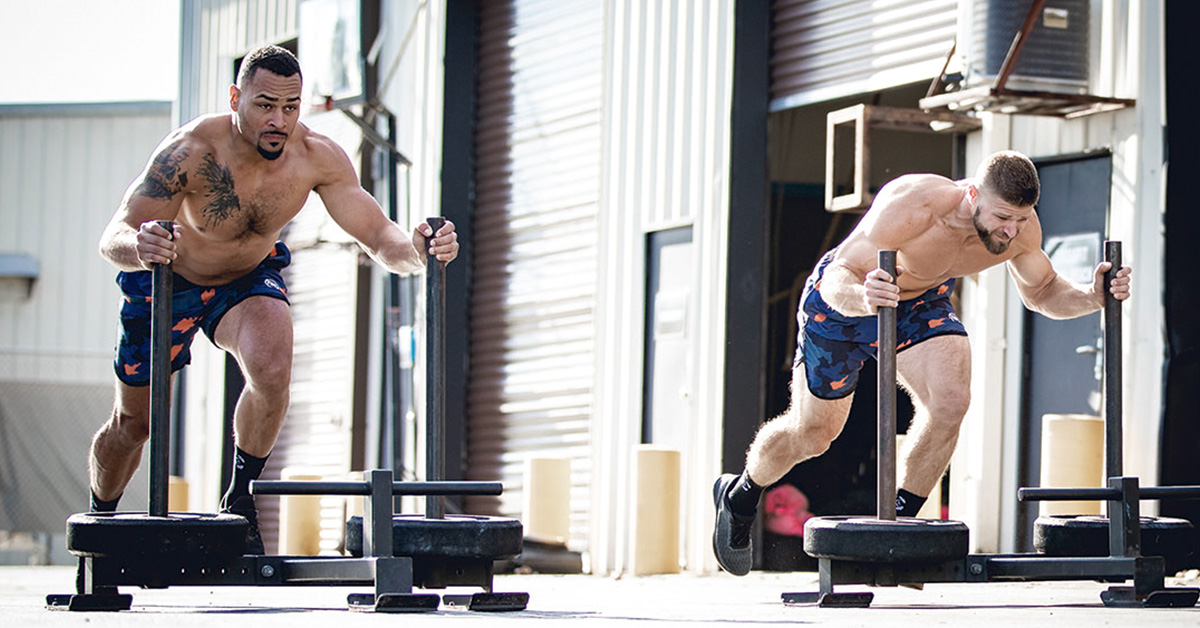In theory, deadlifts are a relatively simple movement. Pick up the barbell and then set it back down again. It’s one of the pillars of functional fitness, and truthfully, it’s a movement we all do almost every single day — inside and out of the gym. Now, what if you’re looking at a workout that includes a decent number of reps? In this case, we’re talking about how to perform deadlifts more efficiently. Let’s go through a few helpful deadlift tips for cycling through those reps with more ease.
5 Deadlift Tips for Efficiency and Ease of Movement
These might sound simple but they make a huge difference. Give them a shot!
1. Use the Hookgrip
Very often, you know the first thing to go? Your grip! Even if you’re not deadlifting the heaviest weight ever, if the rep count is higher, it’s going to do a number on your hands. That’s why this is first on our list of deadlift tips, and this is where the hook grip comes in handy. (See what we did there? Handy?)
In the “regular” grip, you first grasp the barbell with your four fingers. You then layer your thumbs over them. With the hook grip, it’s the opposite. You first wrap your thumbs around the barbell and then wrap your four fingers over them. If you’re new to the hook grip, it’s going to feel weird. Impossible, even. But with time, you’re going to be hooked (Hooked! We’re on fire today!) and it’ll be tough to ever go back.
The hook grip takes a ton of pressure off of your hands, and the barbell can basically hang there. It’s going to take a lot less energy and force to hang onto the bar, which means you can knock out more reps unbroken.
You’re going to build up the skin on the insides of your thumbs over time, but it doesn’t hurt to use tape (and chalk), either.
Shop Now
2. Breathe and Rest at the Top of the Movement (Not the Bottom!)
Understandably, a lot of athletes think that once the barbell is back on the ground, this is when they should take a moment to breathe and reboot. And if you need to drop the barbell completely to rest, do so!
However, if you’re going unbroken, then it’s actually in your best interest to take a big breath at the top of the movement. The biggest reason for this is that in filling your belly with air, you’re bracing your core, which is ultimately going to make it easier to move that weight. And in doing this, it’s also going to help protect your back, since you’re keeping your midsection on tension.
Psst! A weightlifting belt can also help with this.
Shop Now
You can almost look at the deadlift as a top-down movement, rather than something that starts from the floor (even though it technically does).
3. Keep the Bar as Close to Your Body as Possible
Of course, you don’t want to scrape the bar up your shins. That wouldn’t be pleasant. However, you want to think of keeping the barbell in line with your body.
The reason for this is quite simple. The further the barbell gets from your body, the heavier it’s going to feel. The same principle applies to your Olympic lifts, which is why your coach is always telling you to keep the bar close. The further it drifts from your body, the more energy you’re going to have to exert, and the sooner you’ll fatigue. Plus, it’s not the safest way to execute a lift.
Really, the bar should be smoothly sliding up your body as you stand up with it. You can either record yourself or have a friend watch to check your form.
4. Keep Your Neck Neutral
A lot of athletes tend to crank their heads up so that they’re looking straight ahead. This isn’t what your head and neck naturally want to do. It’s going to get exhausting, and you can actually hurt yourself in this positioning.
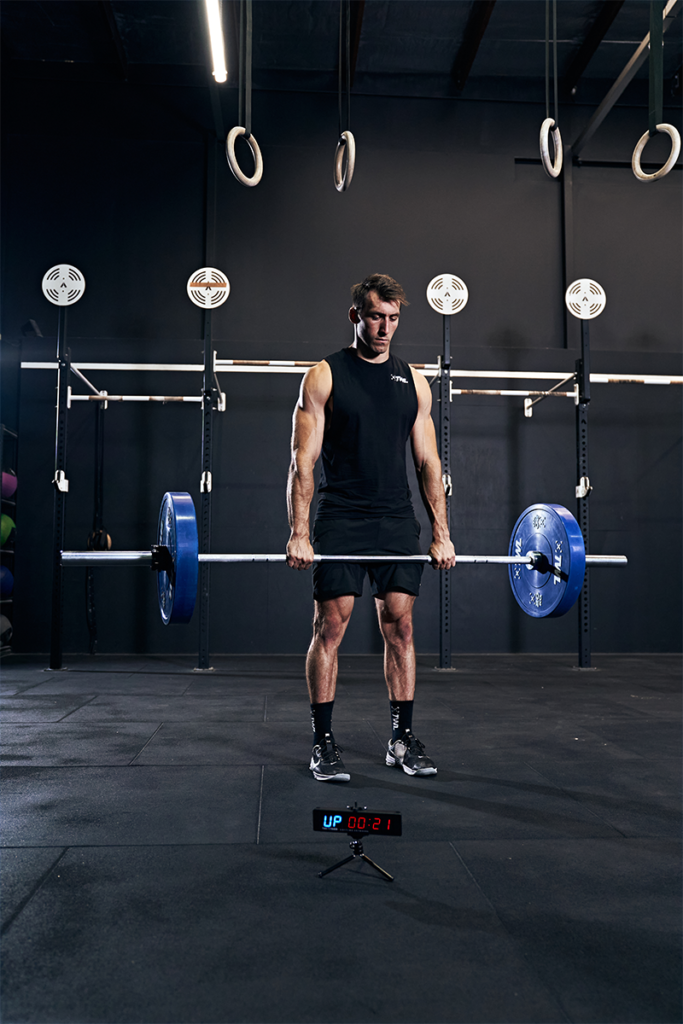
Rather, keep everything relaxed and in alignment. At the bottom of the deadlift (when you’re picking up the barbell), you should be looking more down at the ground. At the top of the lift, you’re going to be looking a little bit ahead but still downward. By controlling where you look, your head and neck will take care of the rest.
Not sure if your gaze is in the right place? Record yourself or ask a friend to check you. Your spine to the top of your head should always form a relatively straight line.
5. Finish the Lift in a Straight Line
Especially when you’re moving through these reps quickly, the tendency is for athletes to overextend at the top of the deadlift. They lean back, pushing their hips forward. Take note: You don’t need to extend this far back in order to complete the rep!
At the top of the deadlift, your body should be in alignment. In other words, everything should be stacked on top of each other — your knees, hips, spine, neck, and head. Everything should be forming a darn near straight line.
In this position, you’re better able to support the weight of the bar. It’s also much safer on your spine, too. If you catch yourself leaning back in order to “rest” the barbell on your quads, just drop the barbell. You’re doing more harm than good trying to rest while still holding all that weight on imbalanced alignment.
Is the deadlift a simple movement? To an extent. But form and technique still matter. Importantly, never sacrifice these things for the sake of speed or reps! If you find yourself losing control and getting sloppy, drop the bar, breathe for a few seconds, and regroup. Following these tips is the best way to get through your reps efficiently and avoid DOMS and injury.

